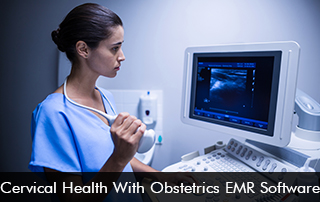Cervical health is a critical aspect of women’s health. Regular check-ups and screenings are essential to detect issues early. With the advancement of technology, electronic medical records (EMR) software has revolutionized the way healthcare professionals manage patient information. Specifically, Obstetrics EMR software has become a game-changer in managing cervical health.
Understanding Cervical Health
The cervix is the lower part of the uterus, connecting it to the vagina. It’s vital in reproductive health. Regular screenings like Pap smears and HPV tests can detect cervical cancer and other conditions early. Early detection increases the chances of successful treatment.
The Role of EMR Software
EMR software is a digital version of a patient’s paper chart. It contains the medical and treatment history of the patients. Obstetrics EMR software is tailored for women’s health, focusing on pregnancy, childbirth, and cervical health.
Benefits of Obstetrics EMR Software
Efficient Record Keeping – EMR software keeps all patient information in one place. This makes it easier for healthcare providers to access and update records. No more searching through piles of paper.
Improved Patient Care – With EMR, doctors can quickly access a patient’s history. This helps in making informed decisions about care. For cervical health, timely access to previous Pap smear results and HPV tests is crucial.
Enhanced Communication – Obstetrics EMR software facilitates better communication between healthcare providers. If a patient sees multiple specialists, all can access the same information. This ensures consistent and coordinated care.
Automated Reminders – The software can send automated reminders for regular screenings. Patients are more likely to remember their appointments and stay on top of their cervical health.
Data Security – EMR ensures that patient information is secure. Unlike paper records, which can be lost or damaged, digital records are protected and can be backed up.
How Obstetrics EMR Software Supports Cervical Health
Comprehensive Patient History – The software stores all relevant information, including previous screenings and test results. This comprehensive history is essential for monitoring changes in cervical health over time.
Customizable Templates – Obstetrics EMR software often includes customizable templates for different types of visits and procedures. For cervical health, templates for Pap smears and colposcopies make it easier for healthcare providers to record and access information quickly.
Risk Assessment Tools – Many EMR systems have built-in risk assessment tools. These tools can help identify patients at higher risk of cervical cancer. Early identification means earlier intervention.
Patient Education – EMR can provide educational materials about cervical health. Patients can learn about the importance of regular screenings and how to reduce their risk of cervical cancer.
Telehealth Integration – Some Obstetrics EMR software includes telehealth features. This allows patients to have virtual consultations, making it easier to discuss concerns and receive advice without needing to visit the office.
Challenges and Considerations
Cost – Implementing EMR software can be expensive. However, the long-term benefits often outweigh the initial investment.
Training – Healthcare providers need training to use the software effectively. Ongoing support is also necessary to address any issues that arise.
Data Privacy – Ensuring patient data is secure is paramount. Providers must choose EMR software that complies with privacy regulations.
The Future of Cervical Health and EMR Software
The future of cervical health management looks promising with continued advancements in EMR software. Innovations like artificial intelligence (AI) and machine learning are being integrated into EMR. These technologies can analyze patient data and predict potential health issues before they arise.
Additionally, mobile health applications are becoming more popular. These apps can sync with EMR, allowing patients to access their health information on their smartphones. They can also receive reminders for screenings and follow-up appointments, enhancing patient engagement and compliance.







